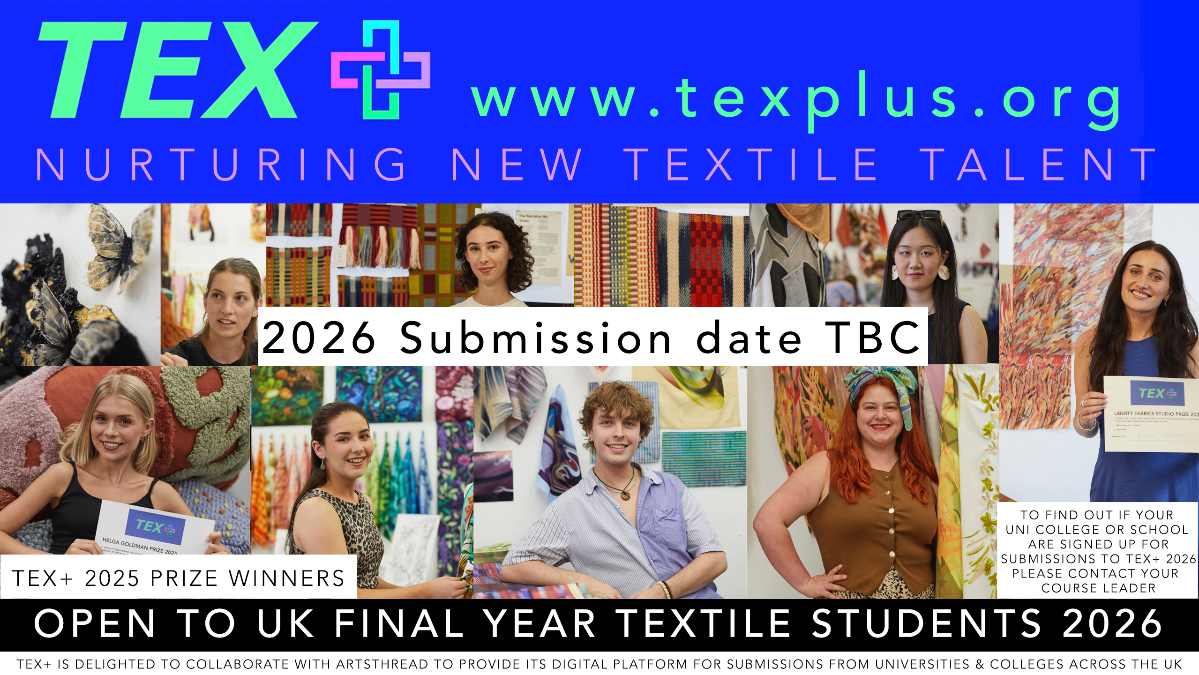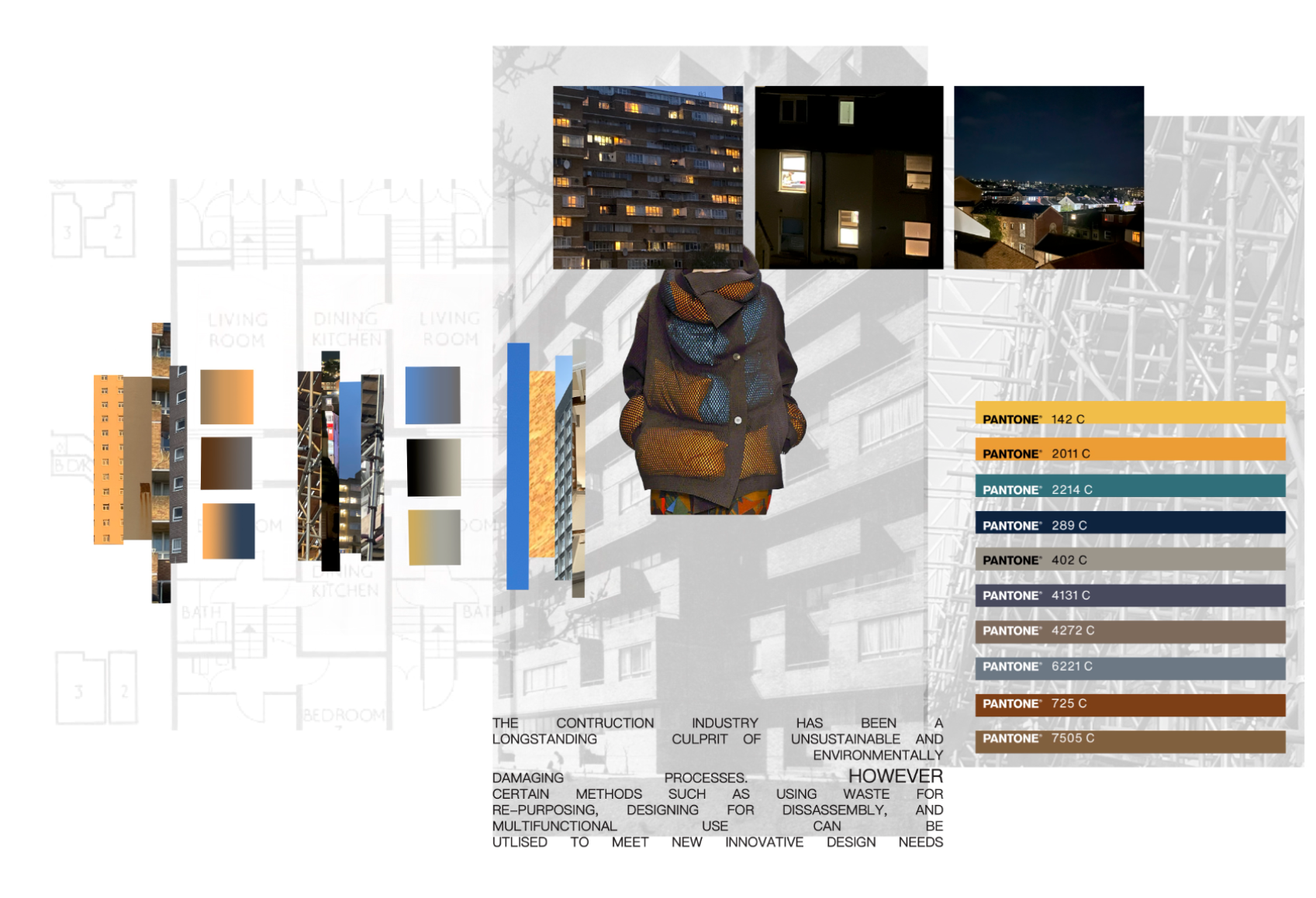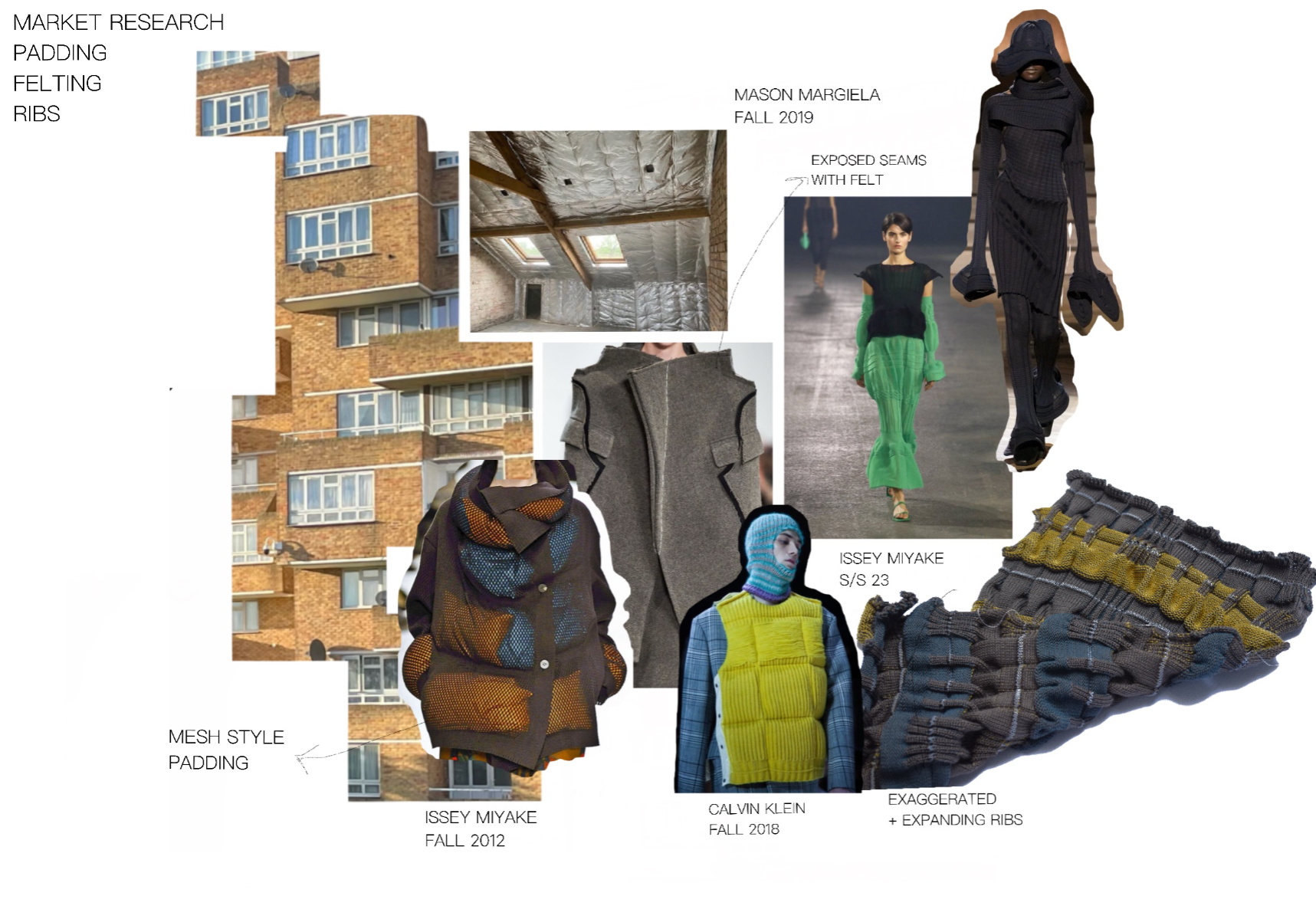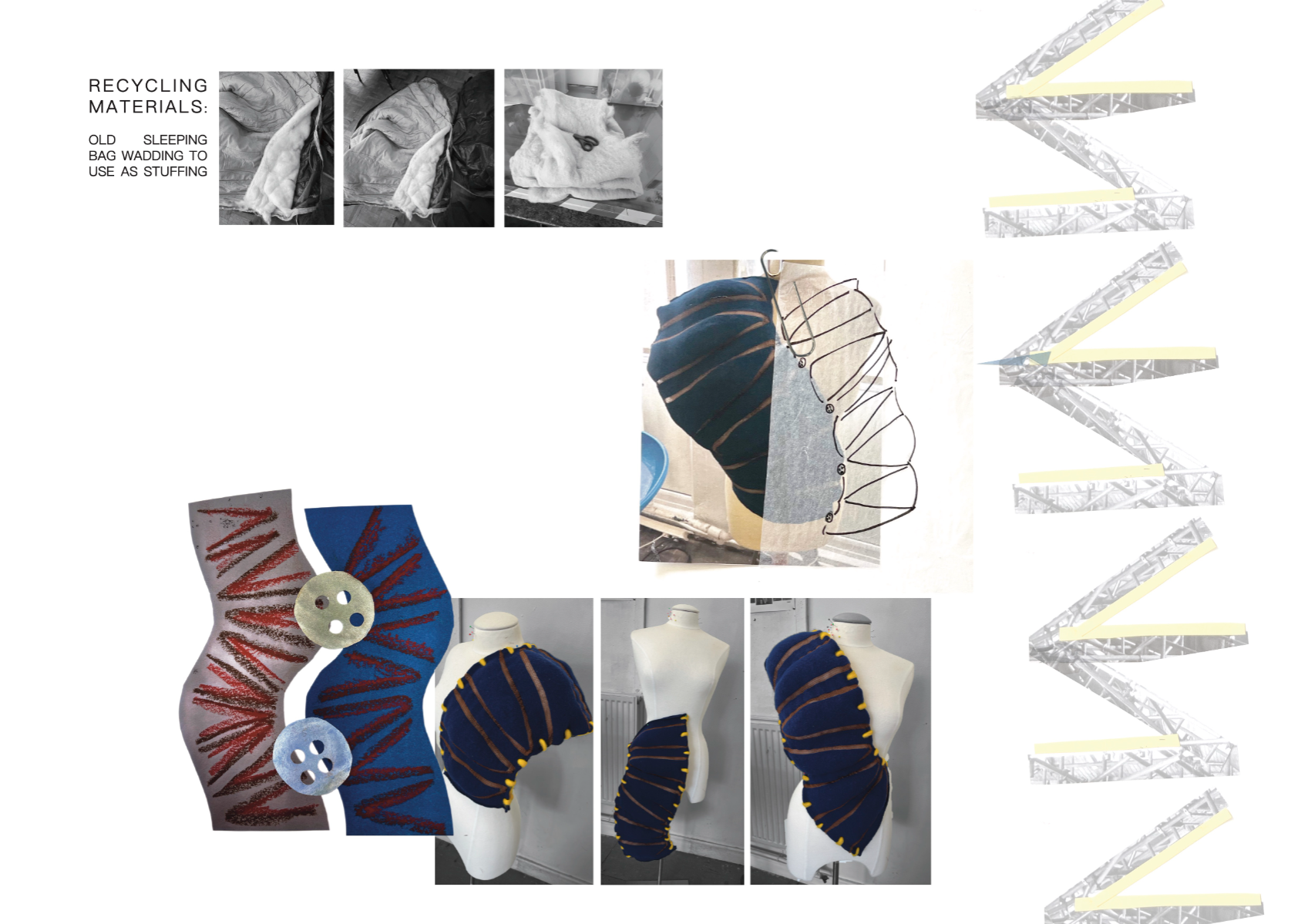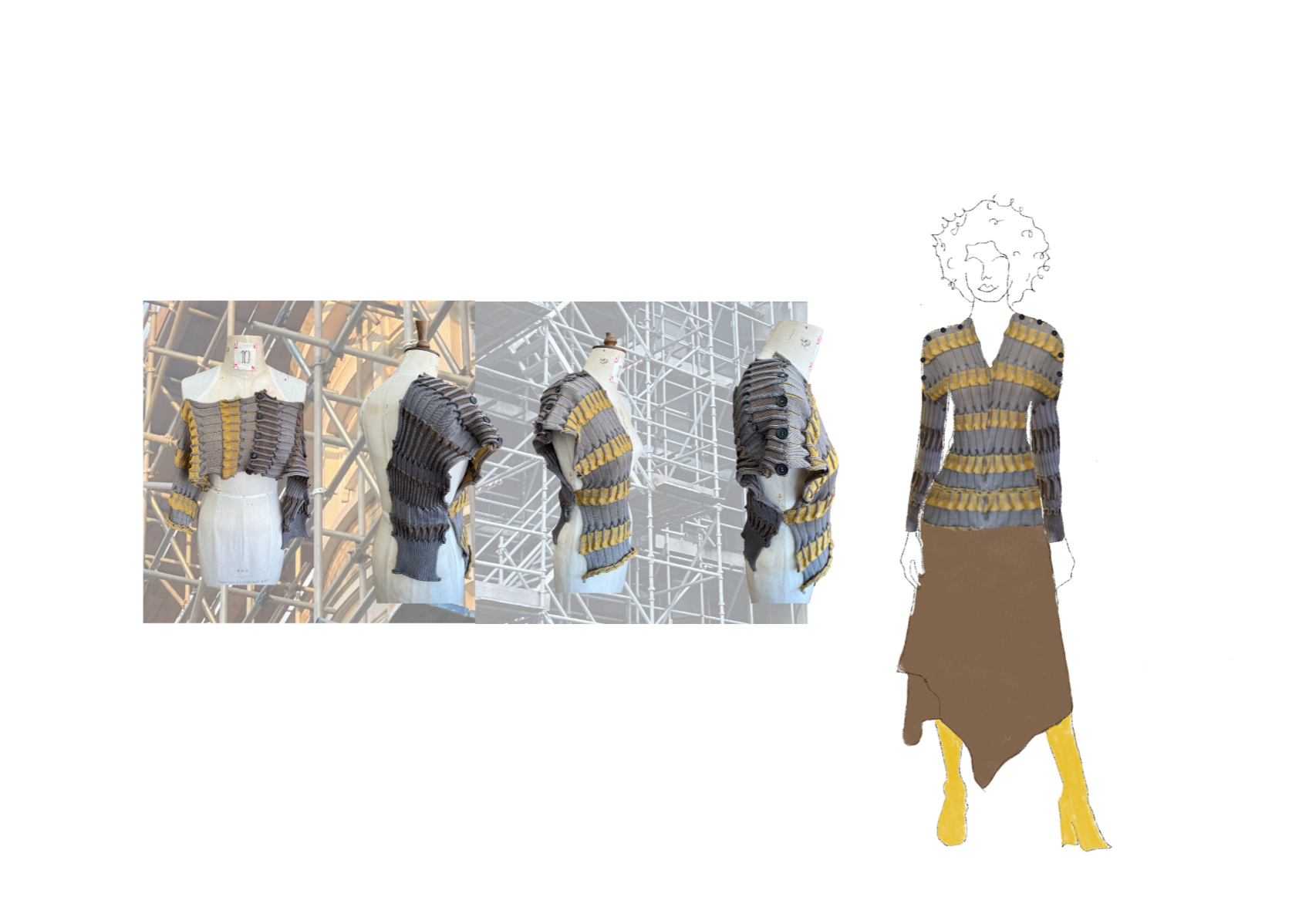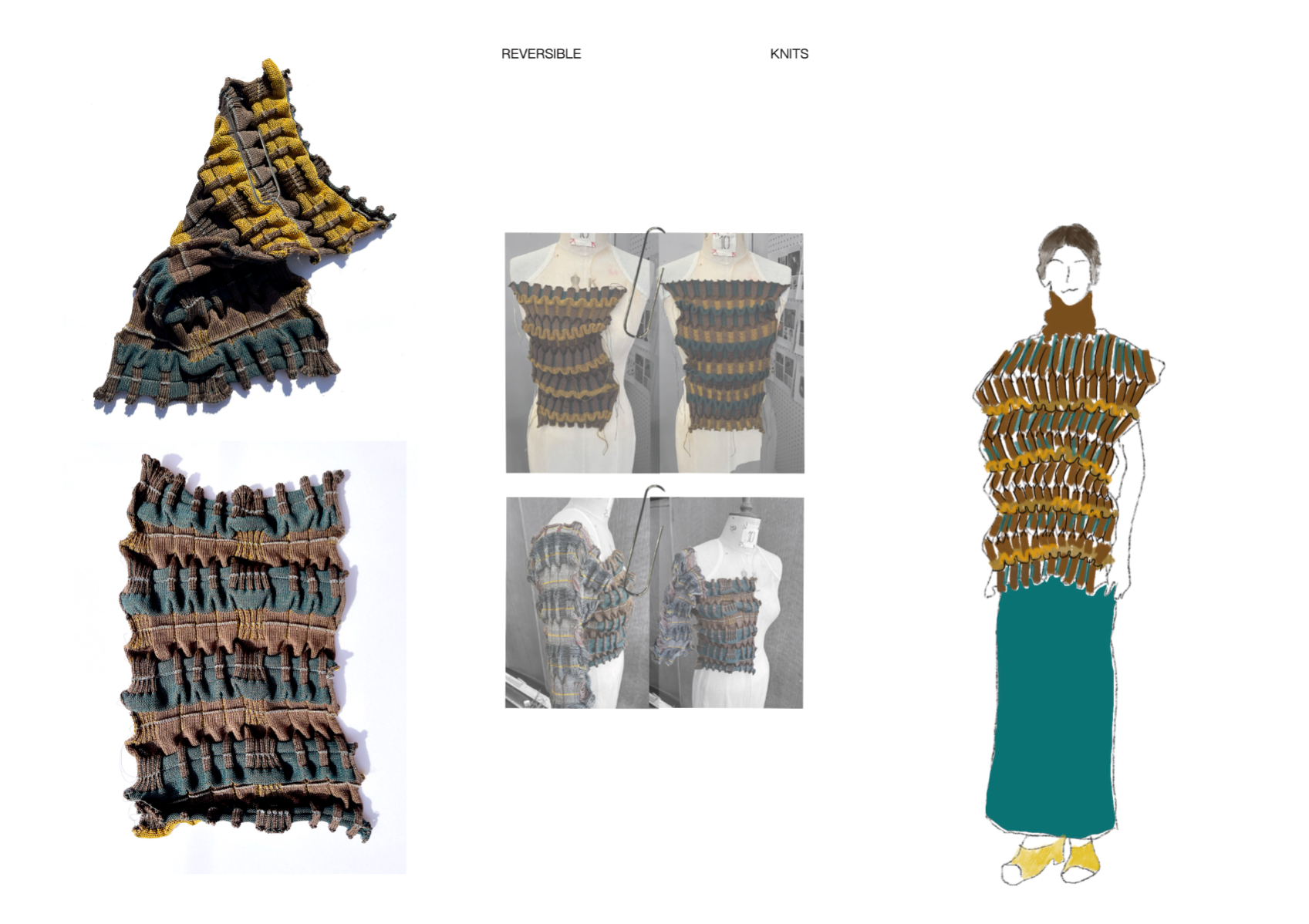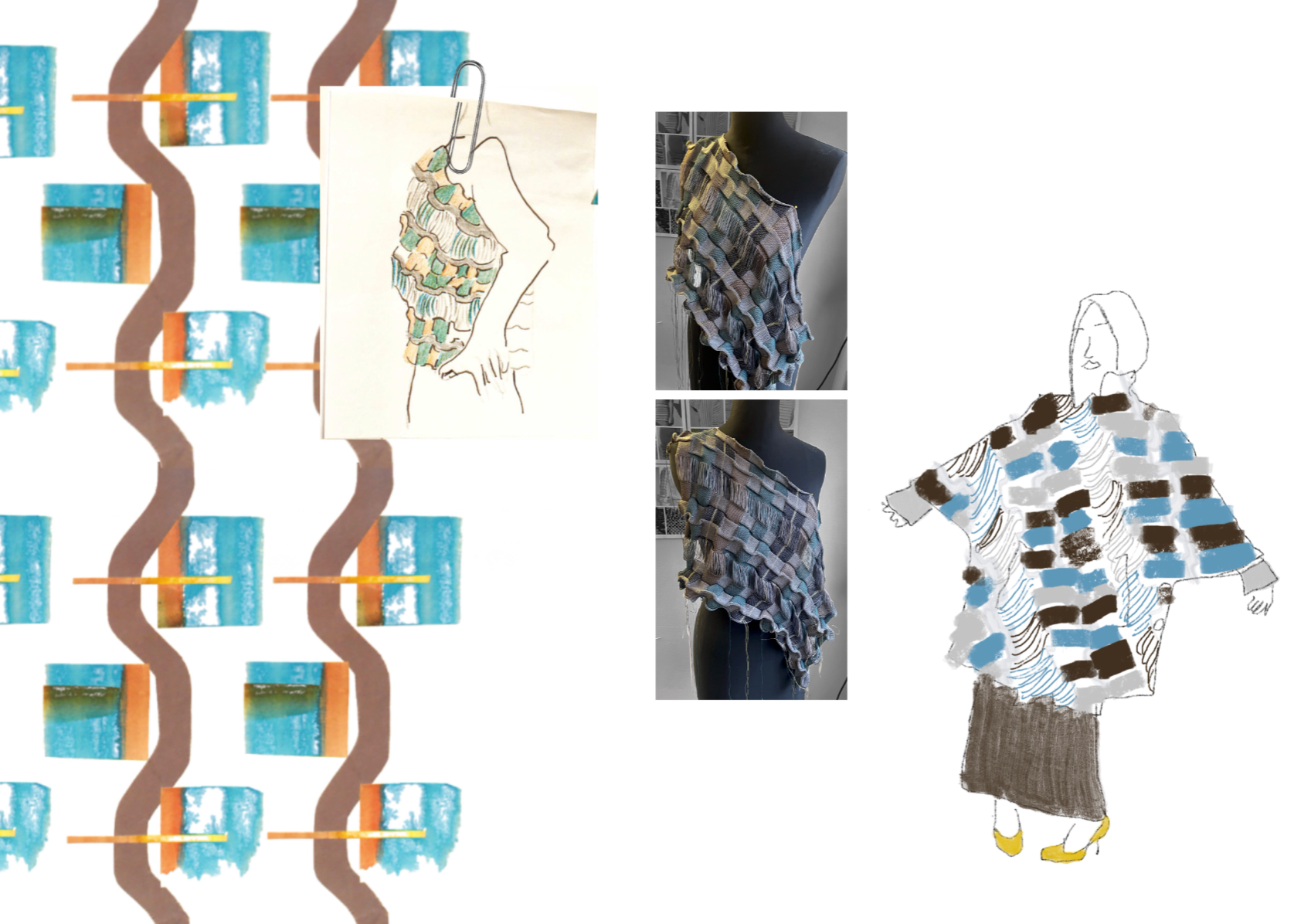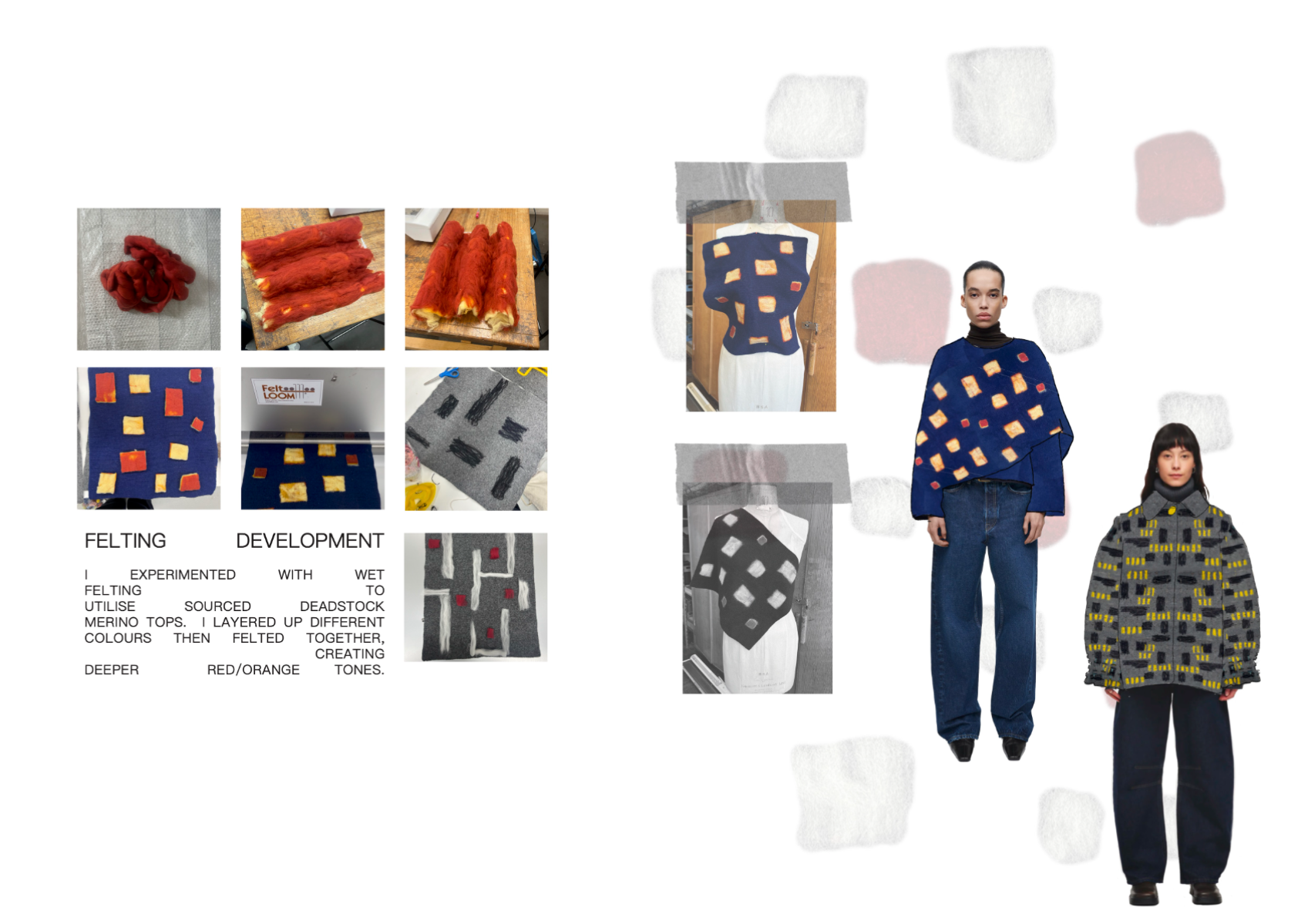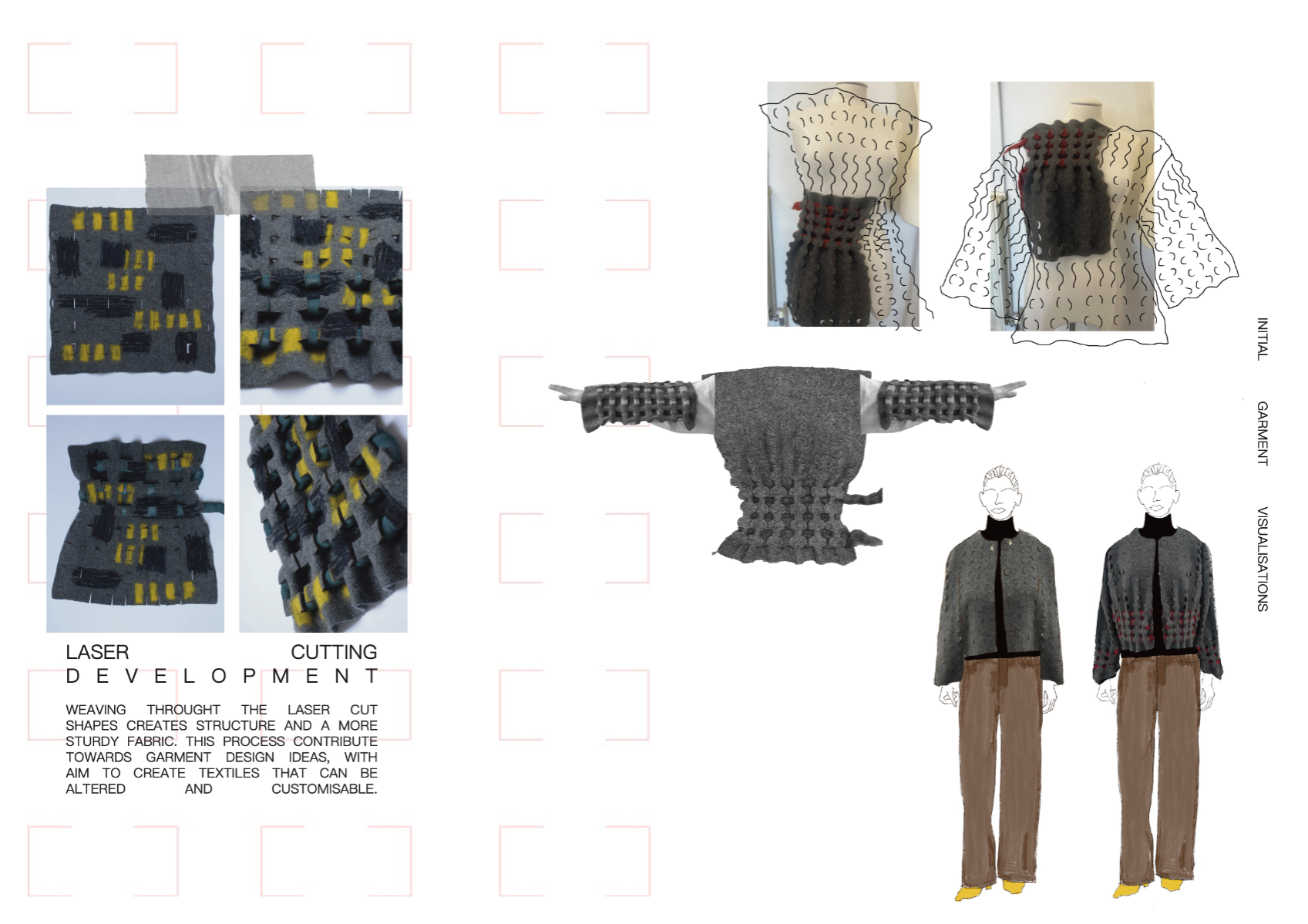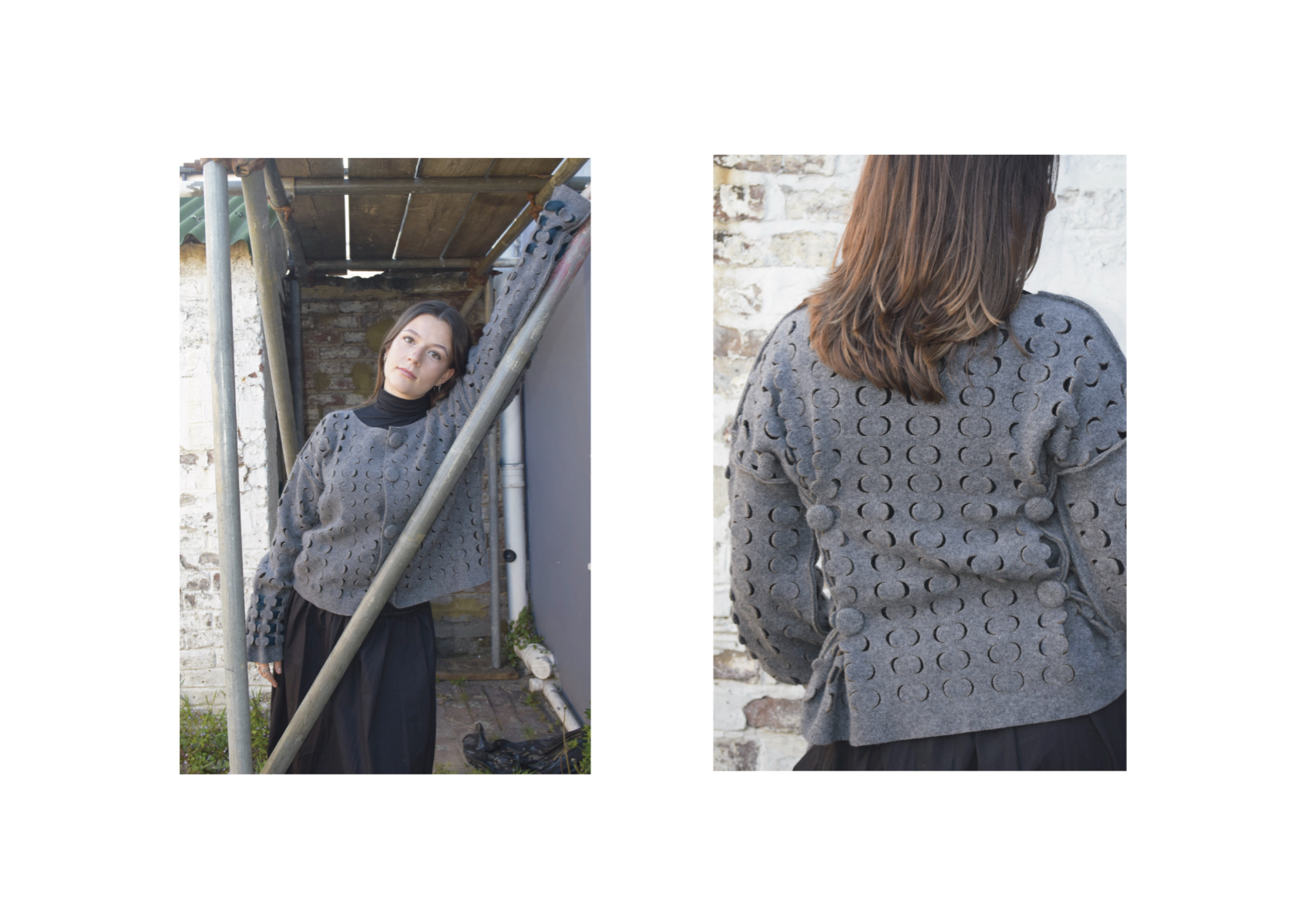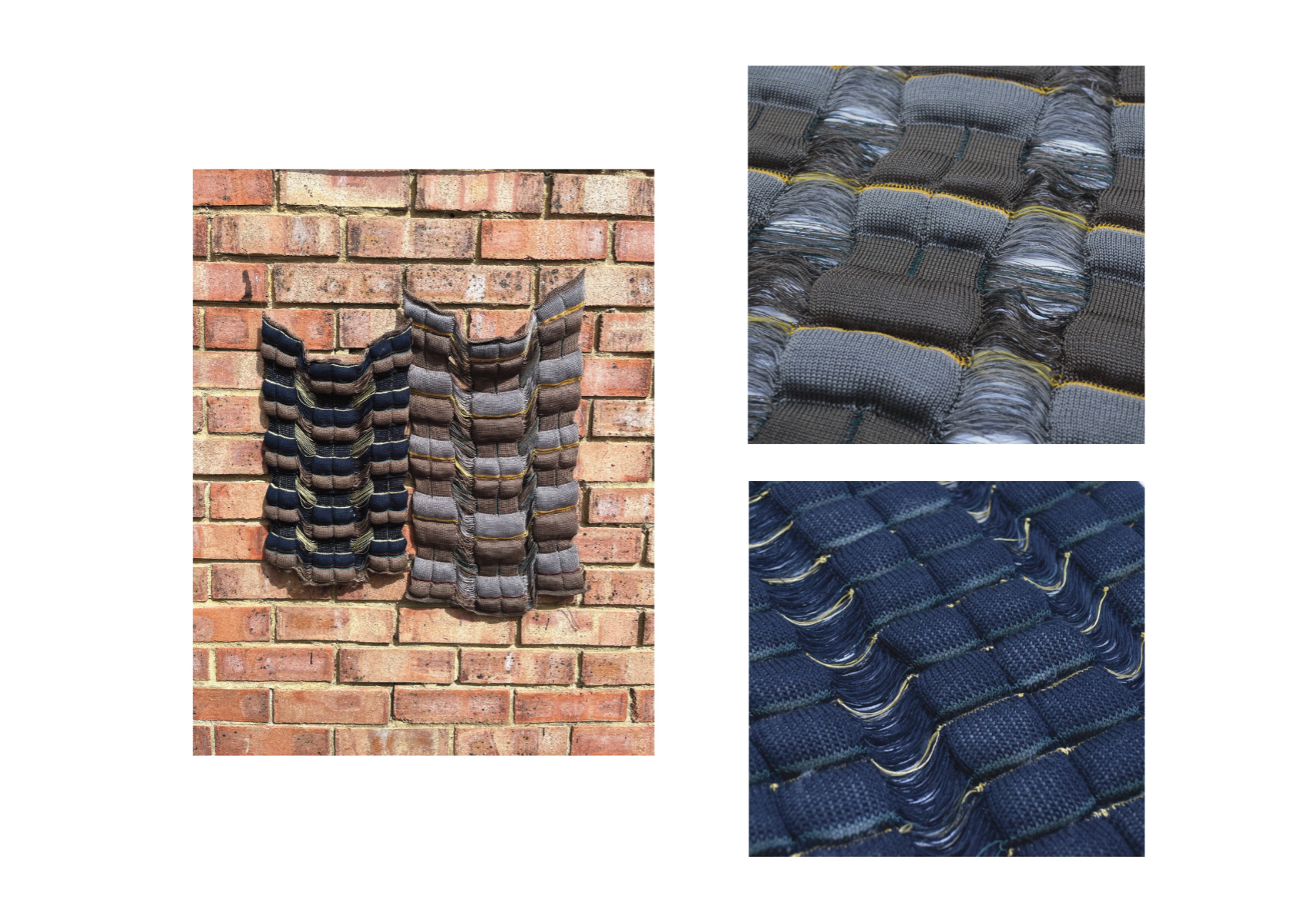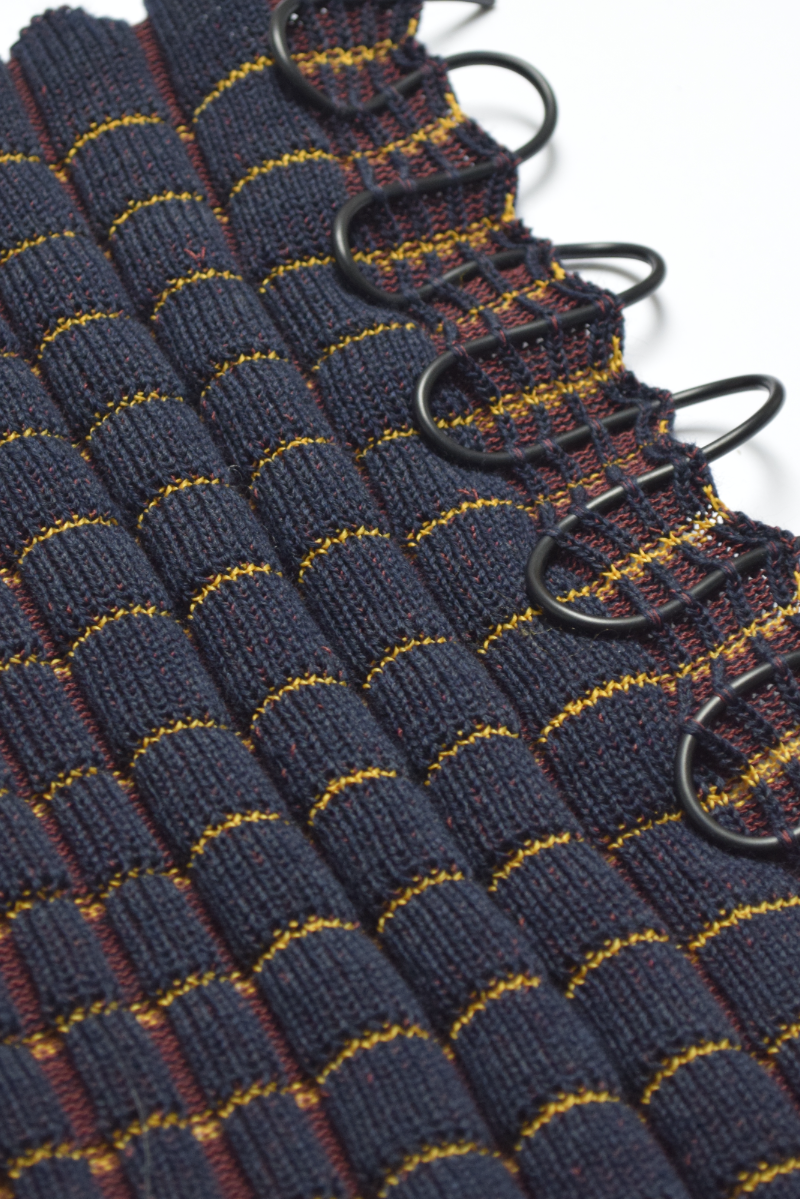Aoife Brown
Textile Design BA
University of Brighton
Graduates: 2025
Specialisms: Textiles - Knit / Textiles for Fashion
My location: Brighton, United Kingdom
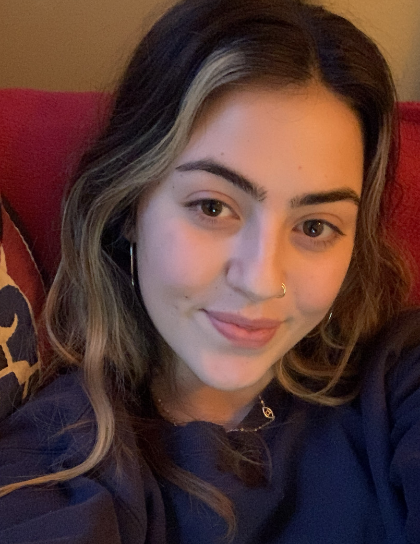

Aoife Brown

First Name: Aoife
Last Name: Brown
University / College: University of Brighton
Course / Program: Textile Design BA
Graduates: 2025
Specialisms: Textiles - Knit / Textiles for Fashion
My Location: Brighton, United Kingdom
About
In my final major project, I aimed to utilise the knowledge I have gained throughout my degree in knitted techniques, alongside sustainable approaches to textile design. Growing up in a city and witnessing the continuous rise in construction and housing developments led me to question not only the social benefits but also the sustainability challenges associated with the construction industry. The construction sector has a significant environmental impact, generating approximately 1.54 million metric tonnes of waste annually in the UK alone. At the same time, there is an abundance of materials that could be reused or recycled for new building projects, reducing the need for sourcing entirely new resources. I became intrigued by the idea of translating sustainable construction practices into a fashion and textiles context. Concepts such as repurposing materials, designing for disassembly, and promoting multifunctionality are strategies in sustainable construction that can also be effectively applied in textile design. As a textile designer, I thoroughly enjoy experimenting with a range of techniques, particularly where I can blend traditional knitting methods with innovative, forward-thinking approaches. My primary goal for this project was to develop wearable textiles that can adapt to the body, whether through expansion or attach/detachment, while also offering reversibility and insulation. Felting, for example, was a new technique I explored during my final year. Being conscious of material choices, I selected wool due to its natural, renewable, and biodegradable qualities. It aligned perfectly with my sustainable design values while also offering the functional properties I needed for felting and later on laser cutting.
Competitions
